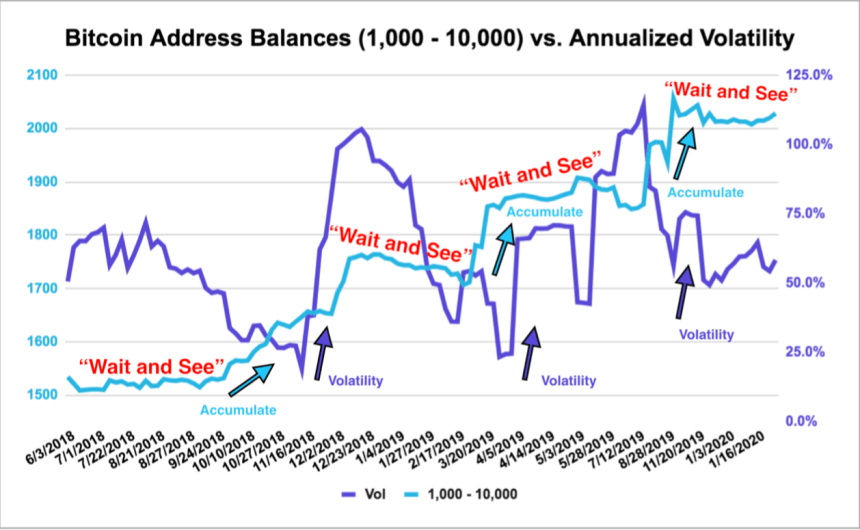Bitcoin whales holding about 100-1,000 units of the cryptocurrency have started accumulating more of it, says crypto trading platform Kraken.
In a report published Friday, the US exchange noted a stagnant growth in the number of whale addresses effectively from January 3, 2020. The month saw 10-100 BTC holders increasing their exposure to bitcoin. Nevertheless, people holding more than 100 BTC were in a “wait-and-see” approach.

Entering the second month of 2020 changed the perspective a bit. Kraken said January ‘s surge in the bitcoin prices soon followed a jump in traders holding 100-1,000 BTC. The exchange further termed it a historical pattern, wherein 10-100 BTC holders in the accumulation phase cast a similar sentiment spell on 100-1,000 BTC holders at a later stage.
“This may mean that sentiment amongst the ₿1,000 – ₿10,000 cohorts is starting to shift to a new accumulation phase,” wrote Kraken.
Smaller Fishes Also Accumulating
A rise in the number of bitcoin accumulators suggests that people are treating it as a store-of-value asset. The cryptocurrency’s price rose from $3,120 in December 2018 to slightly more than $10,000 in February 2020, which showed traders actively increased their risk exposure on the offbeat asset.
Last month, blockchain intelligence firm Glassnodes noted a somewhat similar “accumulation” sentiment among retail traders. It stated that the number of addresses with balances between 0.1 BTC and 1 BTC surged 10 percent since the 2018 bottom formation.
And now with big whales undergoing a similar sentimental shift, experts are hopeful that bitcoin’s price rally may continue further into 2020.
“We anticipate accumulation to conclude in the weeks/months ahead and volatility to re-emerge,” Kraken predicted. “This dynamic of “accumulation preceding volatility” may be explained as absorption of market liquidity, creating tight supply/demand imbalance conditions in the future.”
What’s Driving Bitcoin Whales
Kraken noted that demand for bitcoin as a risk-on asset went up against a string of macroeconomic events.
The cryptocurrency’s correlation with some of the leading haven and risky instruments increased shortly after the US killed a top Iranian military official on January 3. While the dust settled later, a new risk emerged in the form of the Coronavirus outbreak in China.
The epidemic killed about 1,500 people and infected over 50,000 more. At the same time, it sent global stocks to their record lows while boosting demand for hedging assets.
Kraken found that bitcoin surged as China’s central bank tried to contain the economic crisis by injecting abou $170 billion into the system. That might have influenced big investors to keep their exposure glued in the cryptocurrency, an asset they could transfer away from China without seeking the government’s permission.



















